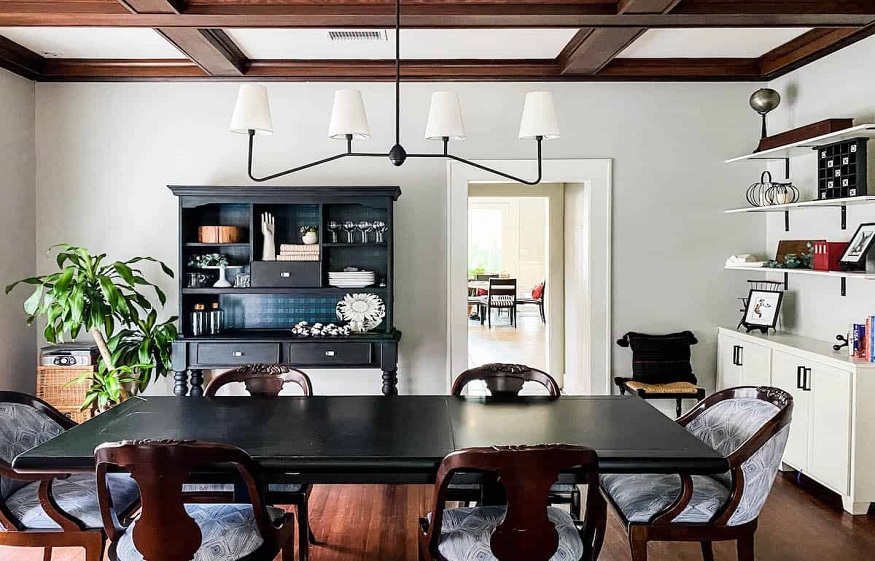Chandeliers hang above the center of the dining table and are a primary design element of a dining room. The chandelier’s height affects its function both as a light fixture and as part of the room decor. Sounds complicated? It’s really not. If necessary, adjust the height based on the standard recommendation. There is no way to go wrong with this. As long as it looks great and the lighting is good, you’ve done it right.
Recommendations for standard height
Chandeliers in dining rooms are generally hung 30 to 36 inches above the top of the table depending on the design. Assume you’ve got an 8-foot ceiling. As a rule of thumb, each additional foot of ceiling height should be compensated for by raising the chandelier 3 inches. The chandelier should be hung 6 inches higher in a room with a 10-foot ceiling than it would be in an 8-foot ceiling.
It is common to recommend an average height; however, before you choose one, consider the size of the room, the table size, as well as the light that is projected by the fixture.
How to adjust chandelier size for room
Chandelier height shouldn’t be determined by ceiling height, according to some designers. When you consider the fixture’s primary purpose is to illuminate the table, this makes perfect sense. Why should the height or the size be adjusted? This can be explained by considering a chandelier’s second principal role as a design element. Following this consideration, we need to look at how the fixture looks in the room.
If you are seated at the table, how does the chandelier look when you enter the room and when you sit elsewhere, for example, such as in a chair away from the table? Consider how the chandelier looks from every common vantage point when the dining room is an open space.
You should also consider the chandelier style and size when choosing the height from which to hang it. Hang an elaborate chandelier a few inches higher than the standard height if it takes up a lot of visual space.
Adjusting for the size of the table
Dining room chandeliers should have a diameter between one-half and two-thirds that of the table’s width, according to the lighting industry. It is also possible to select a fixture whose diameter is one foot less than the width of the table. The chandelier should not be more than 30 inches across, for example, if the table is 42 inches wide.
The proper proportion between the table and the chandelier is helped by staying within this range, but it also has a practical benefit as well: you won’t bump your head when getting up from the table. Depending on the size of your chandelier, you may want to hang it higher to avoid unpleasant collisions with your dining table. Rather than using one large chandelier, a series of small hanging fixtures, such as pendant lights, may be better suited to your table.
The Right Light
Even a temporary installation must be hung above a table and plugged in to test the lighting effect. With this method, you can test the chandelier in any lighting condition, both day and night, and you can assess its height for all purposes, both practical and decorative.

